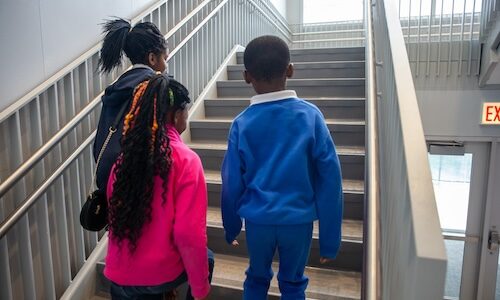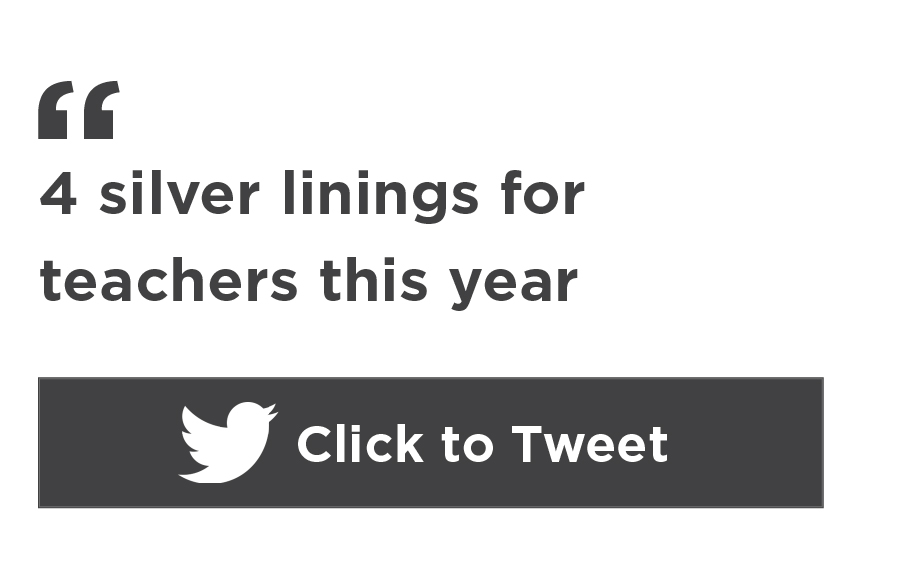Last spring, my son’s kindergarten teacher—who is also my colleague and friend—said, “I always tell my students, when life gives you lemons, you can either make a sour face, or you can make lemonade.”
Under most circumstances, I would consider myself an optimistic person. I can usually see the silver lining and pride myself on my ability to take lemons and make lemonade. But 2020 is no regular year. Back in the spring, I knew that if I wanted to prevent myself from having too many sour faces, I would need some reminders to dig deep and find my more positive self. So I purchased my new Erin Condren planner with the lemon pattern, bought some lemon plates at the Pier 1 going-out-of-business sale, and even splurged on the lemon-pattern romper from Boden.
Reality bites
Well, Little Miss Optimistic over here thought she was doing such a great job making lemonade out of lemons in August as she started preparing for the school year. I was excited to be working, excited to be near—even if only six feet near—my colleagues. I thought I was being super creative setting up my classroom for a hybrid model of teaching, the option my district settled on. I moved from fifth grade, where I’ve been the last nine years, to third grade, so I was also eager to work with a younger age and felt energized by the change in curriculum. I saw the move to a new grade as a blank slate. I was excited to meet my students, and I was extremely excited for my first-grade son to be with a teacher other than me.
Then the year started. The kids are amazing. Their families are kind, supportive, and compassionate. My son loves being in first grade and loves learning. But all this lemonade-making is, quite frankly, exhausting.
[T]here are things that have reminded my inner optimist that she still lives in me. Even if she’s a bit hard to find sometimes.
I am teaching in a hybrid format where I have students in three groups. I see one group of students in person on Mondays and Thursdays, another group of students in person on Tuesdays and Fridays, and a third group of students only online. My students who come in person two days engage in online learning I provide on the three other days of the week when they are home. Wednesdays are for planning and virtual learning.
We also have teachers in our building teaching solely online to students all day and some who are Zooming to a class across the hall in order to maintain the six-foot distance between the students. Some of our youngest learners have been relocated around the building in larger spaces, including our cafeteria and library, so we can accommodate daily attendance with a one-hour early dismissal. (Our district leaders knew K–2 children would benefit from daily in-person instruction to support reading growth, and they got creative to make it work.)
Many of my educator friends and I have been talking, and we’re all struggling to see how this can be maintained. The first few weeks of the year were really, really, really hard. There were personal and shared meltdowns. There were moments when I was sure I couldn’t do it another day. It just felt like there were not enough hours in the day to do all I wanted for my students.
About two weeks into the year, I was Zooming with two other friends. They’re teachers, too, and we teach in three different states. Despite the different models (some of us are teaching a version of hybrid, others are 100% online or masked, distanced, and in person), we were all feeling the same struggles of exhaustion that come from the current ways of teaching. We talked about how we didn’t think things would get better any time soon, but that maybe we could get better at accepting where we were and working within certain protocols. We remembered teachers do their best work when we focus on what we can control, rather than on what is beyond our control. And right now, there is so much beyond our control.
[S]ometimes this will all feel like too much—and […] that’s okay. I’m allowed to feel overwhelmed. I’m allowed to share my struggles. I’m allowed to be human. And so are you.
I could write a whole blog about how challenging things are right now and how I’m not sure they will get better. And while I am certainly not advocating for pretending everything is all rainbows and butterflies (because it’s not. And because toxic positivity is really damaging), I am trying to channel my summer lemons and focus on that lemonade. There are so many things that won’t change any time soon. However, there are things that have reminded my inner optimist that she still lives in me. Even if she’s a bit hard to find sometimes.
1. Creative kids
Since recess is more structured and we have limited time on playground equipment in order to provide our amazing custodial staff time to clean between classes, kids and teachers have been getting creative. There has been no complaining about not being able to use the equipment every day but, rather, kids have been excited about bringing back activities that had been set aside for a while, like Red Light, Green Light; Four Corners; and jump ropes. Kids wear their masks without complaining, and I can see them smiling through their eyes and hear the laughter as they safely play.
2. Appreciative families
Families have been thankful for the dedication from their child’s teachers. I have read the public expressions of gratitude from parents on social media as they talk about how much their child loves the time they do get to be in school and how much they appreciate the online learning opportunities. One day I came home to a surprise package with a succulent plant and a sweet note. I’ve received emails expressing appreciation for how I am organizing content. (I would be remiss if I did not also recognize how hard this is for families. Figuring out not just childcare, but also how to support their child’s virtual learning is no joke. So when a family takes a moment to share their gratitude, I know they mean it.)
As a parent myself, I could not be more grateful for the joy of learning I see in my child. He wants to play Heggerty word games on our drive home in the afternoon. He talks about the stories he acts out in class and about his desk neighbors, who are at least six feet away from him.
3. Rethinking archaic systems
There are several systems that are in place in schools just because “that’s the way we always did it.” Teaching during a global pandemic has required everyone, from teachers and building administrators to district and state leaders, to rethink many systems. Morning drop off and afternoon dismissal have been reimagined and, in some places, are more efficient. Faculty and district meetings via Zoom are saving teachers time and keeping them safe. Perhaps this is an opportunity to continue to change some of the “that’s the way we always did it” systems to something more effective and efficient.
4. Teachers supporting teachers
I have always loved working with my colleagues. However, this year, I think I am more grateful than ever for the collegiality that exists in both the physical buildings and virtual spaces. Educators are sharing ideas with both their classroom neighbor and people they don’t even know on social media. We are dividing and conquering the workload, so we can still have time to be home for our own families. We are sharing online content, maximizing each other’s strengths, and taking on the role of the cheerleader or the listening ear for our colleagues, depending on the day. Whether it is a “thinking about you” text message, a wave from a colleague as they walk by my room, or a late-afternoon planning session that results in laughter as we try to figure out how to make things work, these moments fill my cup. We are being vulnerable and allowing ourselves to share our struggles with our colleagues, recognizing that we may not be able to do it all.
Things. Are. Hard.
As we near the final months of 2020—when I am sure I’ll have some more sour lemon moments—I will remind myself that with enough sugar, you can take any lemons and make some sweet lemonade. And I will also remind myself that sometimes this will all feel like too much—and that that’s okay. I’m allowed to feel overwhelmed. I’m allowed to share my struggles. I’m allowed to be human. And so are you. In the meantime, at least my mask helps hide some of the stress and feelings I may have throughout the day. And it also helps hide all the maskne I now have.
All joking aside, I am thankful for a job I still love, even under circumstances I could have never imagined. I am thankful to work in a system that was able to reimagine itself overnight in March, learn from that experience, and reorganize itself for the start of a new school year. Teachers, you’re doing an amazing job under unbelievably challenging circumstances and your students are lucky to have someone as creative, hardworking, and resilient as you.
Photo credit: trentcurrinphotography.com
Photo backdrops : Foxbackdrop









